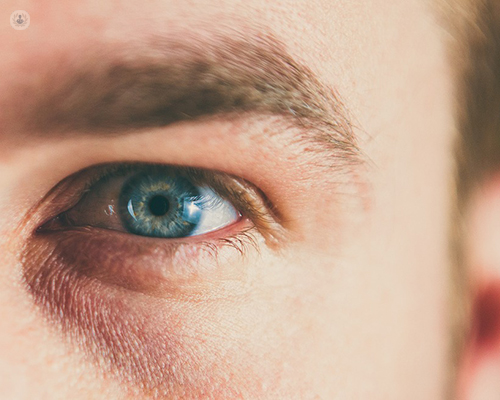Can cataracts be caused by injury to the eye?
Written by:In this informative guide on cataracts, distinguished consultant ophthalmologist Mr Pieter Gouws reveals if cataracts can be caused by injury to one’s eye(s), and tells us how long it normally takes for cataracts to develop as a result of trauma to the eye.

Can cataracts be caused by injury?
Cataracts can definitely be caused by injury, as the cataract is essentially a change in the lens in the eye, and if you think of the lens as a structure made up of protein that is clear and see-through, it can easily become damaged.
What injuries can cause cataracts?
There are two main types of injuries that cause cataracts
- One is blunt trauma, where the eyeball is deformed from a direct blow to the eye.
- The second method would be penetrating trauma, where a sharp object goes into the eye and punctures the lens causing a cataract to form.
Radiation can also cause cataracts, and individuals involved in glass blowing can also suffer from cataracts.
Are there different types of cataracts, and which of these types can develop from an eye injury?
There are many different kinds of cataracts. The most common injury-related cataract that we see is either to the front or the back of the lens. However, if you have a penetrative injury to the eye lens, patients would have a cataract forming.
How do traumatic cataracts affect patient’s quality of life?
The most obvious one is if the lens starts becoming opaque and the capacity is directly in the path that the light takes into the eye. As a result, the vision is quite badly affected. Due to the fact that the structures are so delicate, the tiny little support structures of the lens can get damaged, and the lens can get partially or totally dislocated. Patients can suffer from glaucoma and/or inflammation as a result.
How long does it take to develop a cataract as a result of trauma?
Once the patient suffers an injury, the lens, almost immediately, becomes quite opaque. Then, patients may start to notice haziness in the lens but the vision is not badly compromised, or you can get progressive haziness, which leads to a more significant cataract.
How are traumatic cataracts treated?
If the cataract formed is not necessarily affecting the visual pathway directly, this cataract will be observed. If there is a cataract that is really affecting the vision, lens removal would be the course of action. Lens removal is normally achieved through lens replacement surgery.
If you are worried about cataracts and would like to get your eyes tested out for cataracts, you can book a consultation with Mr Gouws today via his Top Doctors profile.


